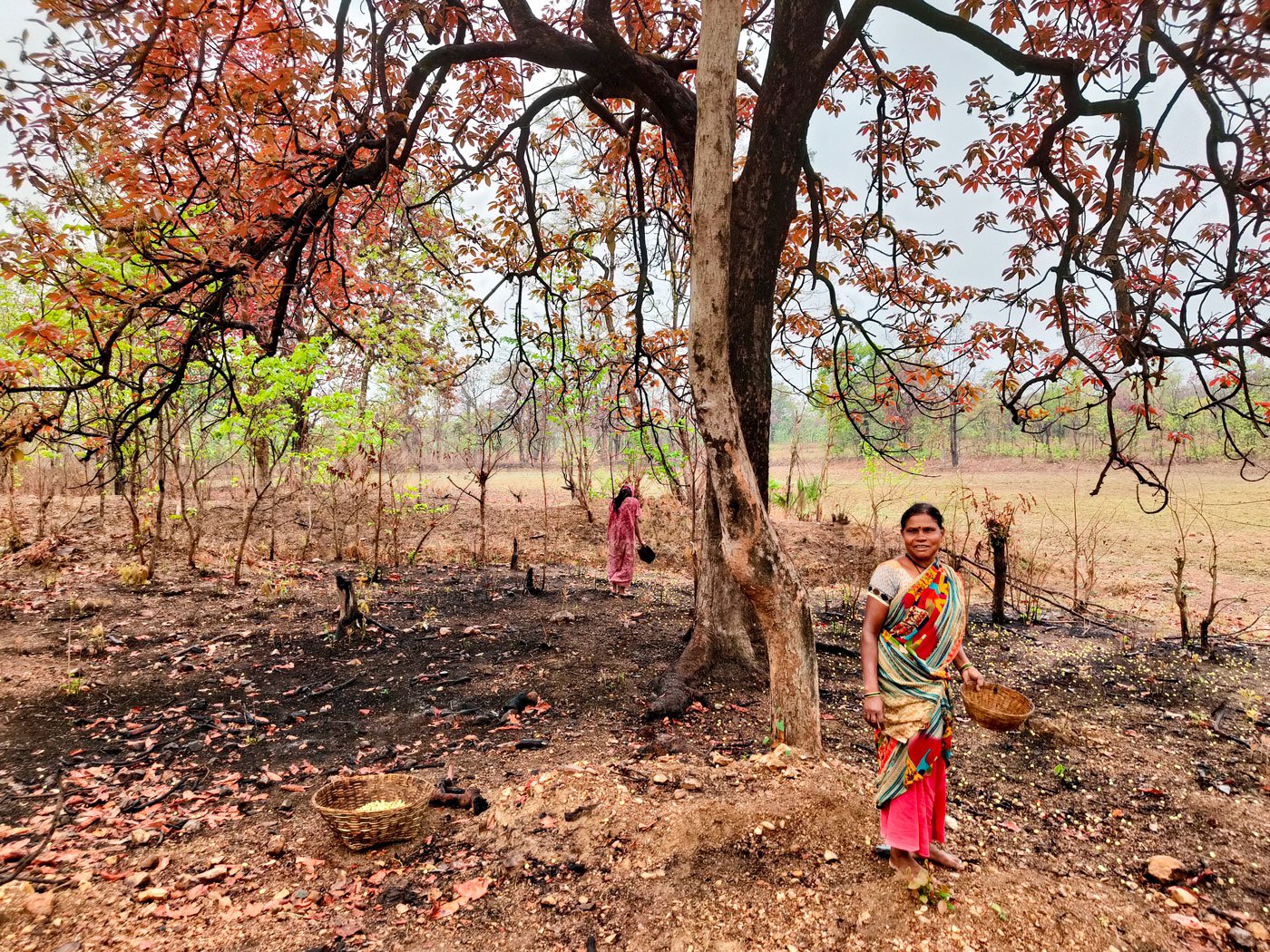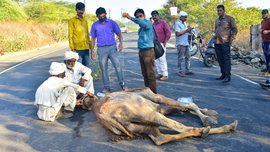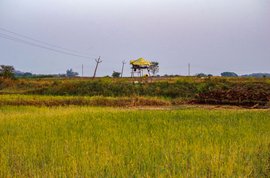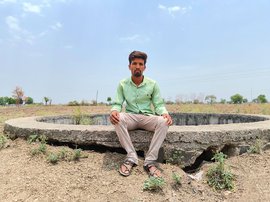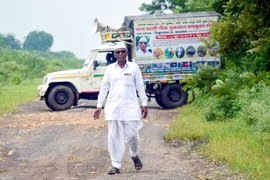A sweet, nutty, intoxicating fragrance wafts across the narrow alleys of Arattondi village.
In the front yard of every house, a magnificent hue of yellow, green and brown mahua flowers are drying on bamboo mats, soft rugs and mud floors. Brown flowers are the hardened, sun-dried version of freshly plucked yellow and green flowers.
Elections are round the corner, and mahua is in season in Gondia, Maharashtra.
“ Mahua in April, tendu leaves in May,” Sarthika Kailash Aade quips. “This is what we have here.” Every morning, the 35-year-old and other villagers belonging to the Mana and Gond tribe spend 4-5 hours in the surrounding forests, collecting the soft flowers that fall from the tall mahua trees, their leaves now in shades of red. By noon, the mercury is at 41 degrees Celsius, and the heat is enervating.
Each mahua tree yields an average 4-6 kilograms of flowers. People from Arattondi village (also called Araktondi by locals) collect it in bamboo cans or plastic sacks and bring it home to dry in the sun. A kilo of dried mahua earns them Rs. 35-40 a kilogram and each person can collect an average 5-7 kilos every day.

Gondia, Bhandara, Gadchiroli and Chandrapur districts of eastern Vidarbha go to polls in the first phase of the General Elections on April 19. Across the region, men, women and children are busy collecting mahua flowers in the mornings
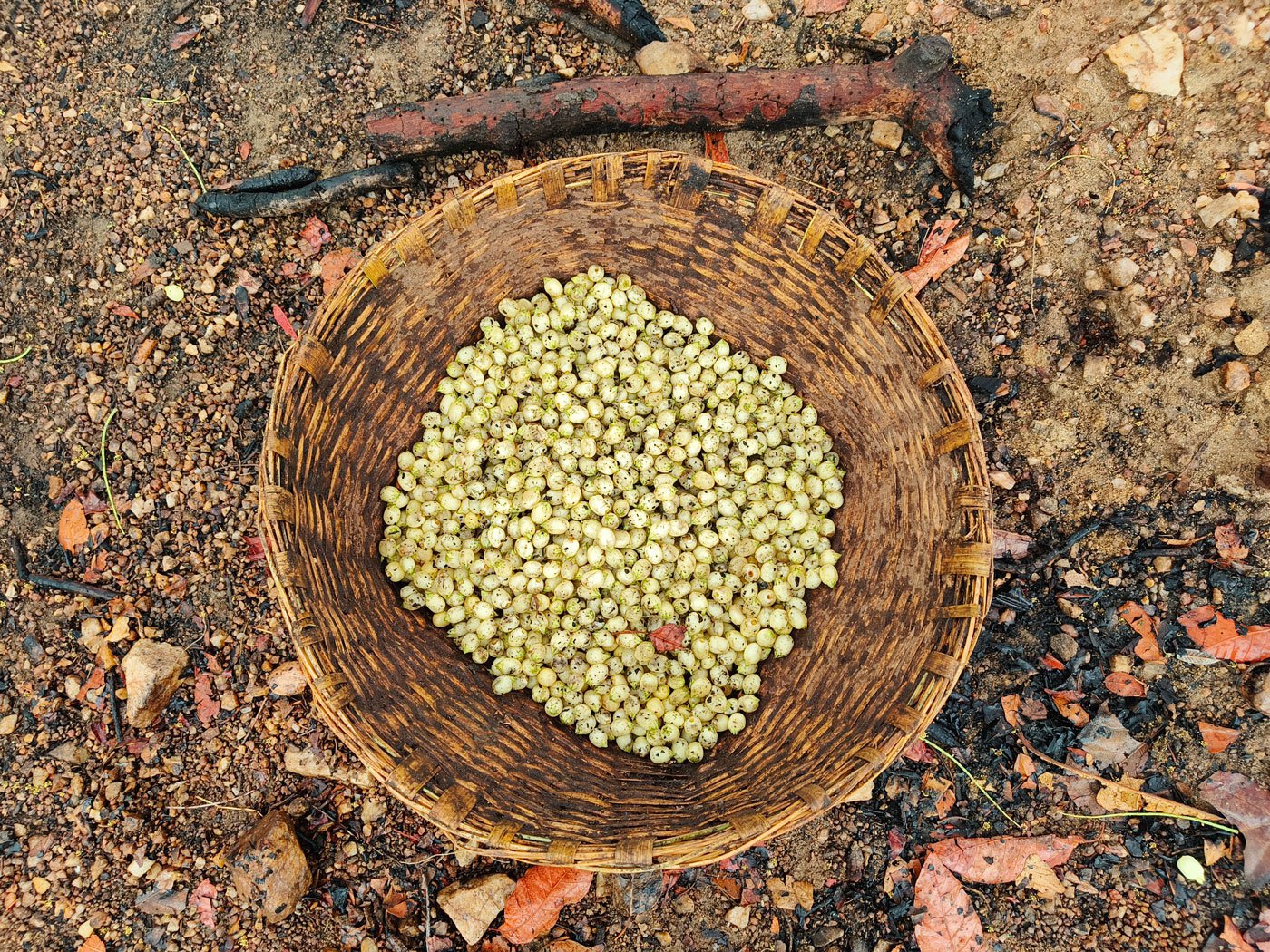
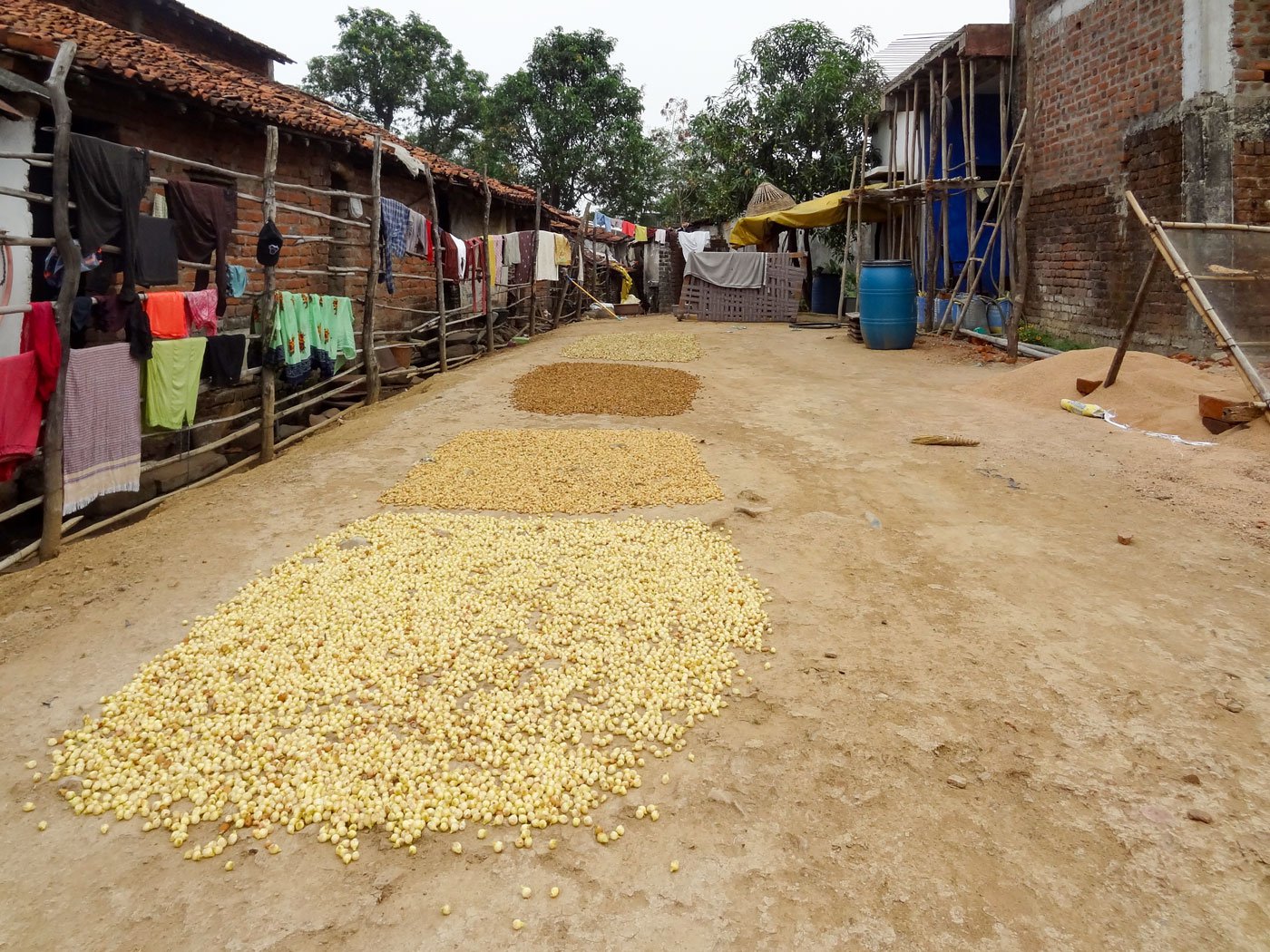
Collecting mahua flowers take up to five hours a day. The flowers once collected, are laid to dry on bamboo mats, rugs and sheets in the hot April sun. This is an annual livelihood for people in central India
The mahua ( Madhuca longifolia ) tree holds an unparalleled cultural, divine and economic significance in the lives of tribal populations across central and eastern India. In the Adivasi hinterland of Gondia district in eastern Vidarbha – including the strife-torn Gadchiroli district – mahua is a major source of livelihood. According to the 2011 census, Scheduled Castes make up for 13.3 per cent, and Scheduled Tribes, 16.2 per cent of the population. The other option for people here is the Mahatma Gandhi National Rural Employment Guarantee (MGNREGA) programme.
In the dry-land, small-scale farming villages, as farm-work perishes and off-farm is hard to find, millions spend hours every day in April collecting the flowers, on their own farms or in the surrounding forested areas of Arjuni-Morgaon tehsil . Forests occupy 51 per cent of the land in Gondia, nearly half of it is protected area, according to the 2022 district social and economic review .
A 2019 study on the status of mahua production and tribal livelihood – an initiative of the Mumbai School of Economics and Public Policy (MSE&PP), found that the eastern Vidarbha region collects approximately 1.15 lakh metric tons (MT) of mahua . Gondia district’s share is a little over 4,000 MT and Gadchiroli accounted for a whopping 95 per cent of the total state production, says Dr. Neeraj Hatekar, well-known economist and MSE&PP’s former director.
A kilo of
mahua
means one man-hour of labour, the study found. Thousands of families spend 5-6
hours a day in April collecting
mahua
flowers.

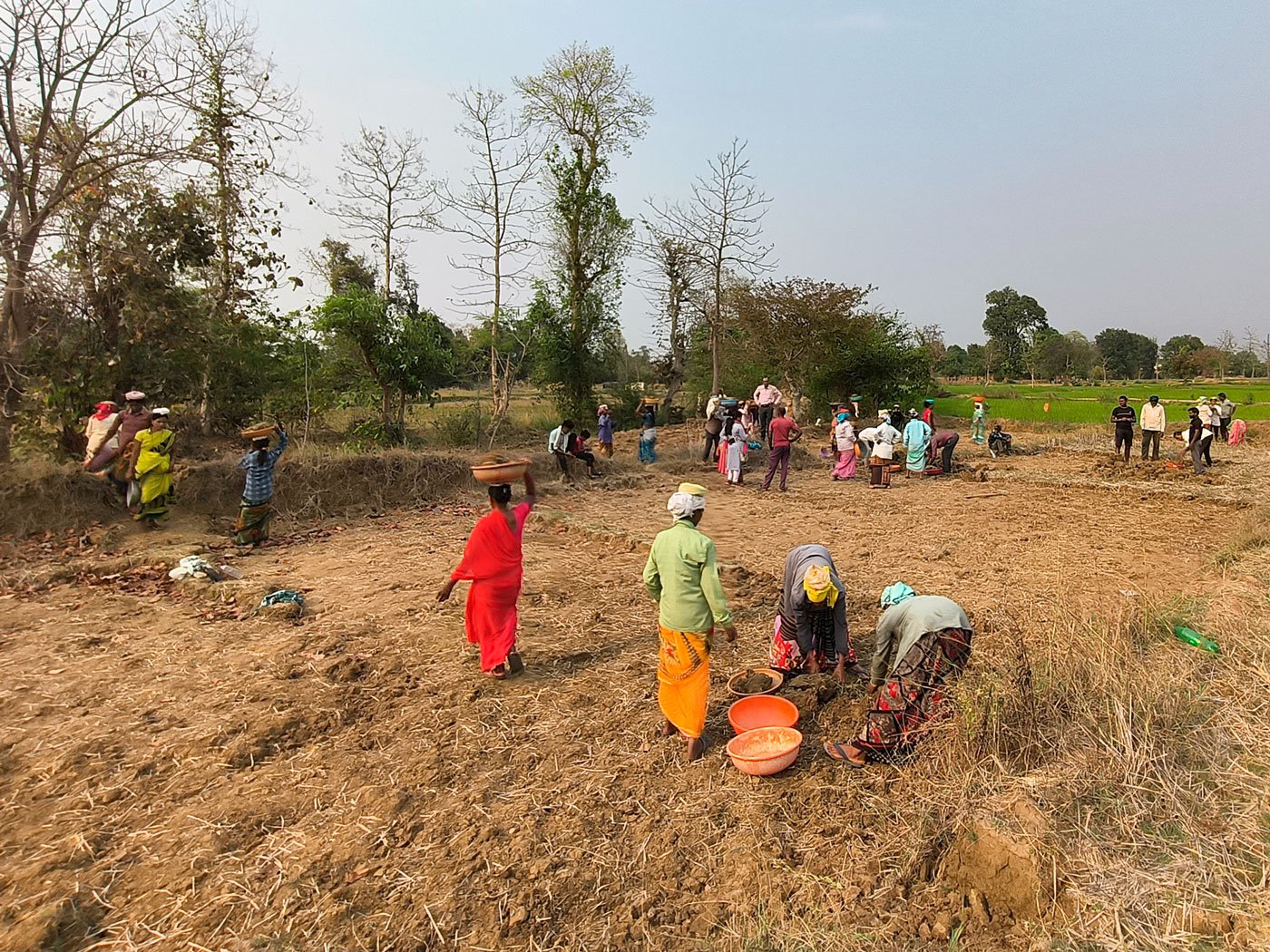
The collected mahua flowers are aggregated at the village level (left) by traders from Chhattisgarh and transported to Raipur. Families in Araktondi village depend on forest-based livelihoods like mahua collection in April and tendu leaves collection in May
The neighbouring state of Chhattisgarh is the big collection hub for the aggregated mahua flowers, mainly used in liquor production, food products, and as cattle feed.
“The flowers aggregated are much less than the
actual production,” Dr. Hatekar says. “The reasons are manifold, but mainly
this activity is laborious and very time-consuming.” He has suggested radical
reforms to
mahua
policy in
Maharashtra where liquor made from the flowers is illegal. He also adds that
measures to stabilise the prices, streamline the value chain, and organise the
markets will benefit the largely Gond tribal population who depend on it.
*****
There’s no possibility of Sarthika ever reading Arvind Panagariya’s ‘ Don’t lose sleep over inequality.’ The article was published on April 2, 2024, in the Times of India , one of the leading English dailies. Panagariya is unlikely to ever meet Sarthika either.
Their worlds don’t intersect at any point.
Panagariya is probably in the top one per cent of India’s income bracket, not in the elite dollar billionaire league, but the influential policy maker’s league.
Sarthika and her village folks are among the country’s poorest and most powerless – the bottom 10 per cent. Their households are devoid of amenities – the family’s income does not exceed Rs. 10,000 a month, she says, from all sources.
The mother-of-two says – and others around her nod in a
resounding affirmation – that their living is only getting harder by day. And
she is losing sleep over spiralling inflation and stagnating avenues for
earning an income.


Sarthika Aade (blue bandana) is a small farmer who relies on mahua and Mahatma Gandhi National Rural Employment Guarantee scheme. In the last 10 years, the demand for MGNREGA has only gone up say women who spend six-seven hours under MGNREGA, and this includes educated men and women. With other women from the village (right)
“Everything is becoming expensive,” Araktondi’s women say. “Edible oil, sugar, vegetables, fuel, electricity, transport, stationary, garments.” The list goes on.
Sarthika’s family has less than an acre of rain-dependent land on which they grow paddy. It gives them about 10 quintals of harvest, with hardly any marketable surplus for year-long returns.
What do tribals like Sarthika do then?
“Three things are the backbone of our livelihood March through May”, says Alka Madavi, a community resource person in the village for Umed – the state rural livelihood mission.
She lists them out: minor forest produce – mahua in April, tendu leaves in May; MGNREGA work, and cheap foodgrains given by the state. “If you remove the three, we will either permanently migrate for work to cities, or die of hunger here,” says Madavi who steers the self-help groups here.
Sarthika and her community of Gonds spend five hours in the mornings collecting mahua from surrounding forests, five to six hours constructing a road under MGNREGA, and the evenings doing their household chores – cooking, washing, rearing the livestock, tending to children, and cleaning. At the worksite, Sarthika fills up the plastic pans with the lumps of hard soil, and her friends lift them on their heads and dump them on the roads. The men level it later. Each one of them makes several trips up and down from the farm pits to the road site.
For a day’s work, their wage: Rs. 150, according to the rate card. Along with earnings from mahua in season, they can make Rs. 250-300 working through the day. Come May, and they enter forests to collect tendu leaves.

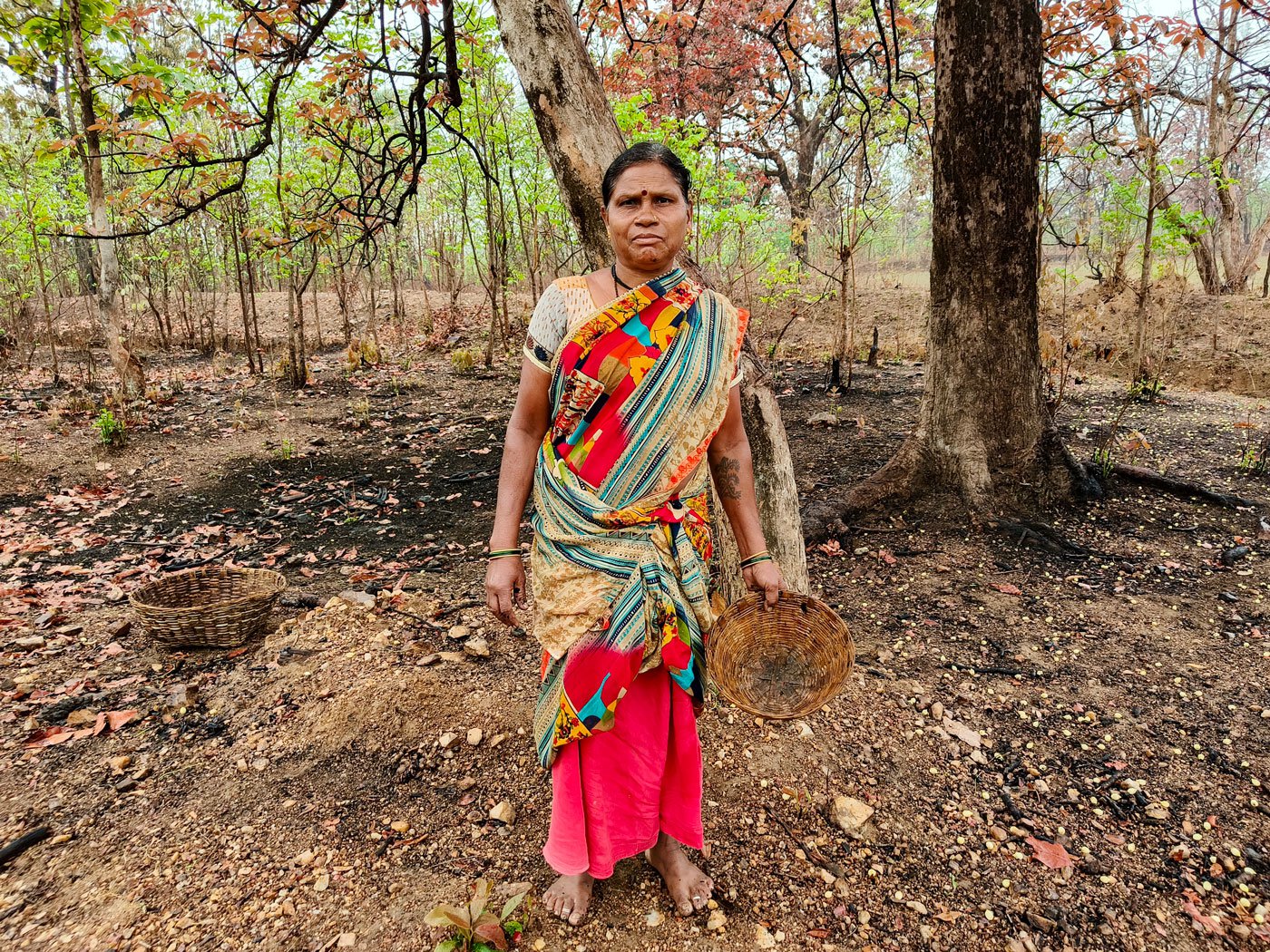
Alka Madavi (left) is a community resource person in the village for Umed, the state rural livelihood mission. Sarthika (right) pauses while collecting mahua in the forest
Ironically, MGNREGA remains the only livelihood for the poor in large parts of the country despite Prime Minister Narendra Modi repeatedly deriding it as the Congress party’s ‘living monument of failure’. Ten years of his rule, the demand for MGNREGA has only gone up in 2024, say the women who spend six-seven hours under MGNREGA, and this includes educated men and women.
It will take hundreds of years for Sarthika and the other women to make the equivalent of a day’s income of India’s richest man, Mukesh Ambani. Unequal incomes, wrote economist Panagriya, is something we should be losing our sleep over.
“I don’t have a farm or any other work,” says Samita Aade, 45, also a Mana while sweating it out at the MGNREGA worksite. “ Rozgar hami [MGNREGA] is the only work we can get to fetch some income.” Sarthika and others are demanding “better wages and work round the year.”
Contestation over forest offerings has intensified in the past few years, Samita hints, as more and more people fall back on the forest-based livelihoods in the absence of work round the year. Araktondi lies near the forested landscape south of the Navegaon National Park, and has not yet got community forest rights under the Forest Rights Act .
“But,” chips in Sarthika, “there’s a fourth
[livelihood] – seasonal migration.”
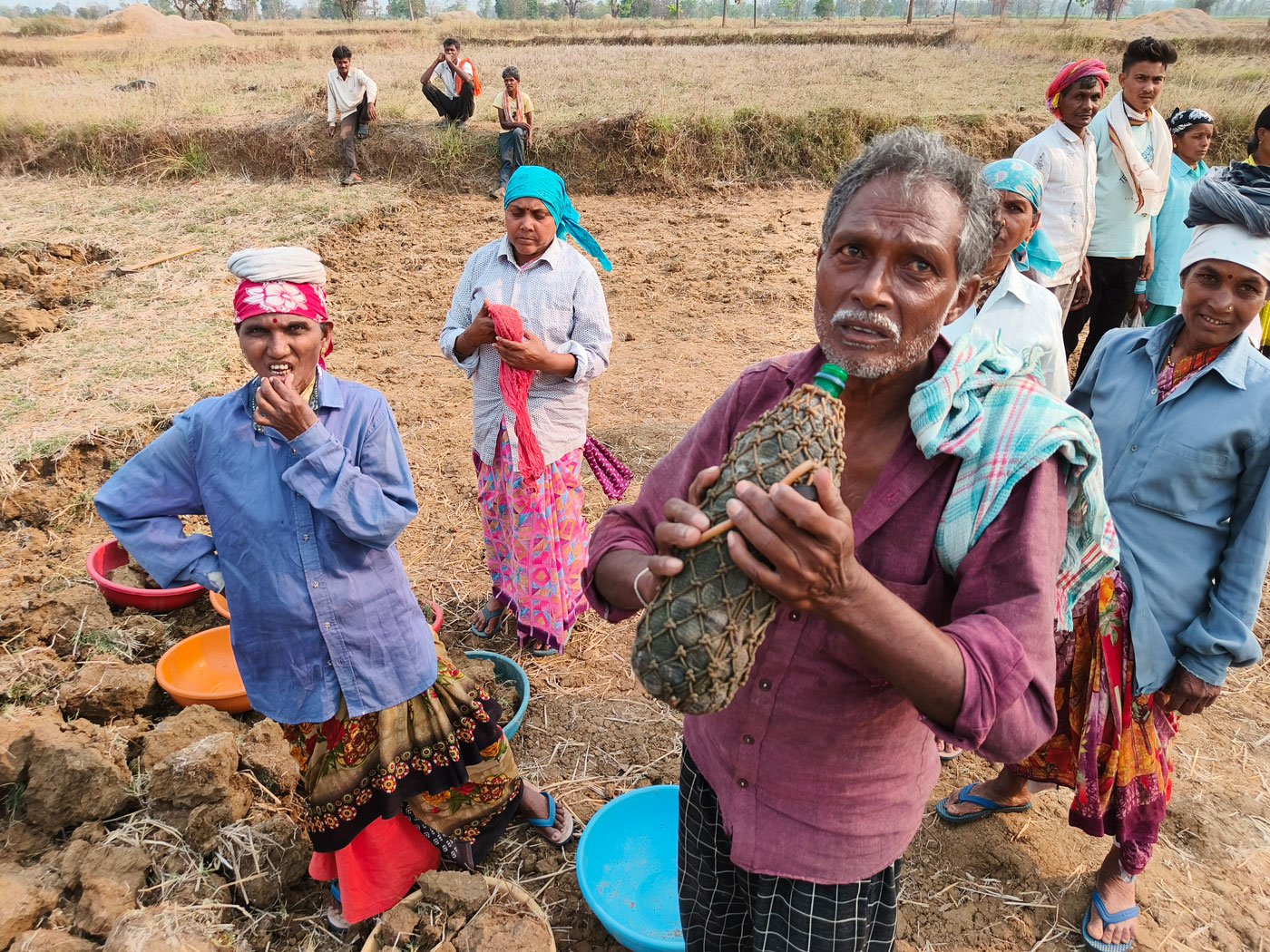
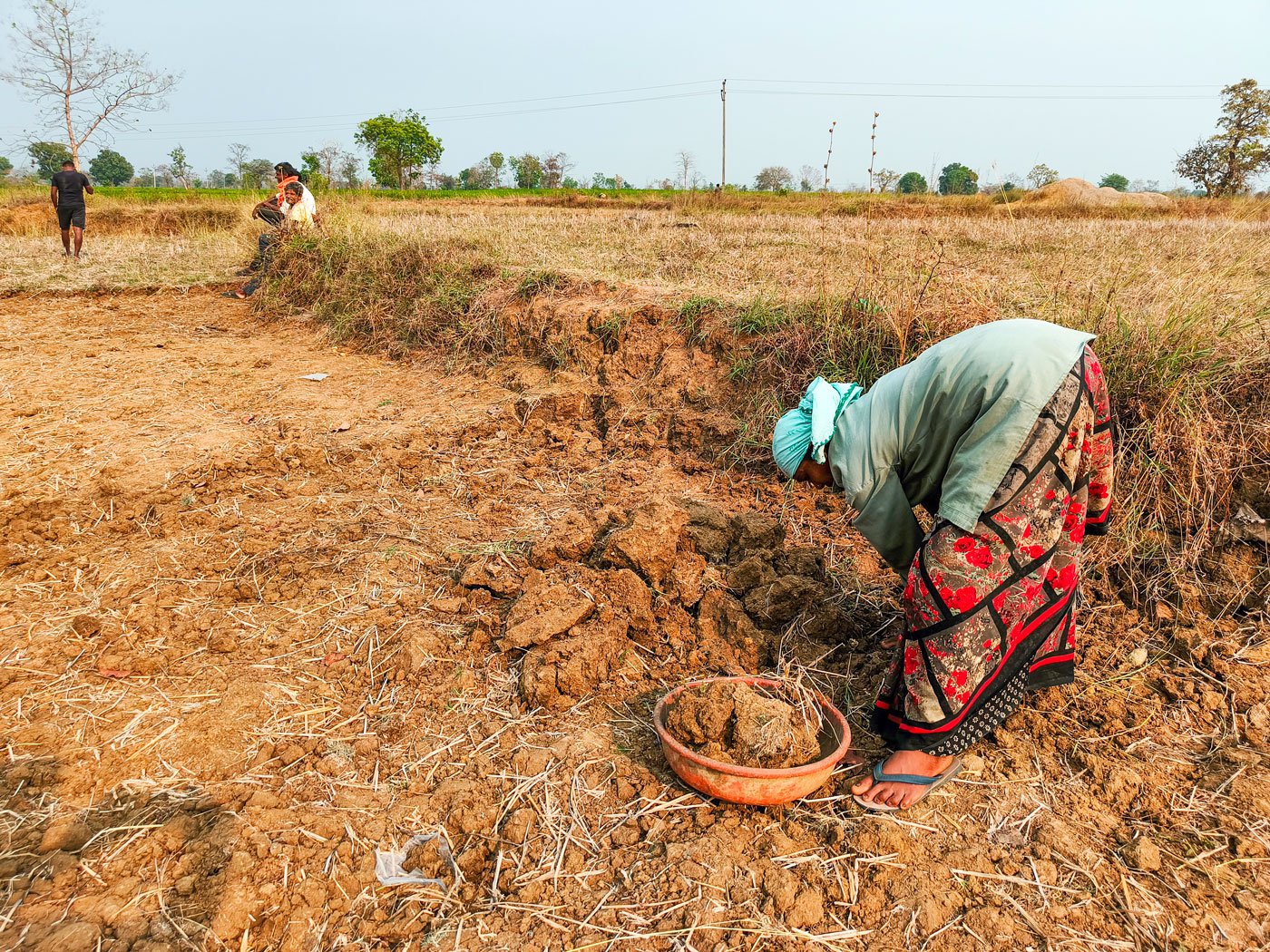
It will take hundreds of years for Sarthika and the other women to make the equivalent of a day’s income of India’s richest man, Mukesh Ambani. Unequal incomes, wrote economist Panagriya, is something we should be losing our sleep over. Sarthika (right) and others are demanding better wages and work round the year
Every year, October through February, nearly half the village leave their homes for far-away places to work in others’ fields, industry or work sites.
“My husband and I went to Yadgir in Karnataka this year to work in paddy fields,” says Sarthika. “We were a group of 13 men and women who did all the farm work in one village and returned late February.” That annual income is a major support.
*****
The rice bowl and forest-rich districts of eastern Vidarbha – Bhandara, Gondia, Gadchiroli, Chandrapur and Nagpur– are a total of five parliamentary constituencies. They vote in the first phase of the 2024 General Elections on April 19.
There’s stark disillusionment among the Araktondi villagers with the political classes and the bureaucracy due to their complete apathy for the people. There is also palpable anger among the poorest, over the Modi-government’s 10 years for making their lives harder.
“Nothing has changed for us,” Sarthika
says. “We got cooking gas, but it’s very
expensive; the wages are the same; and there’s no steady work round the year.”

The MGNREGA site in Araktondi village. There’s stark disillusionment with the political classes and the bureaucracy; there is also palpable anger among the poorest over the Modi-government’s 10 years for making their lives harder
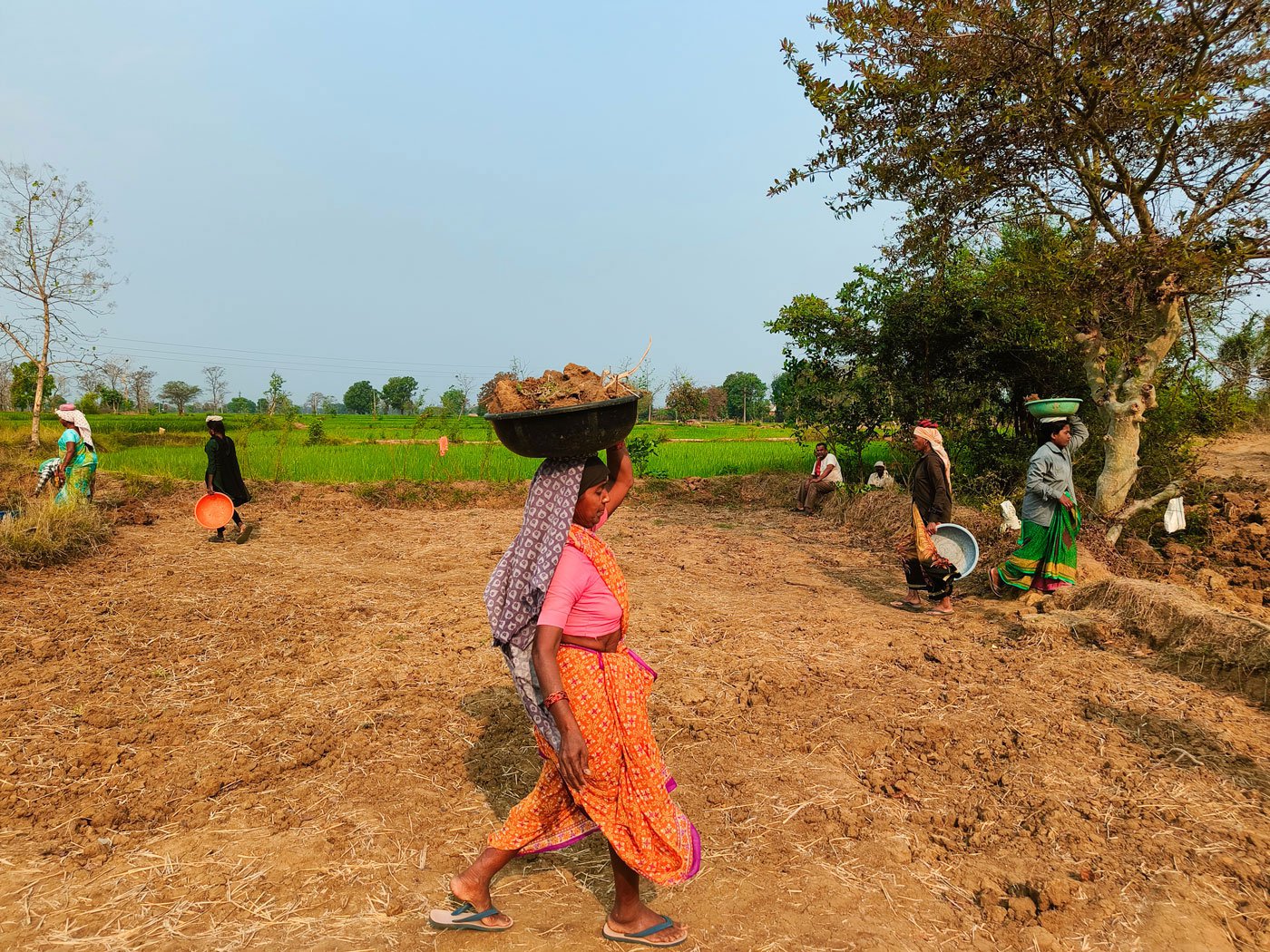
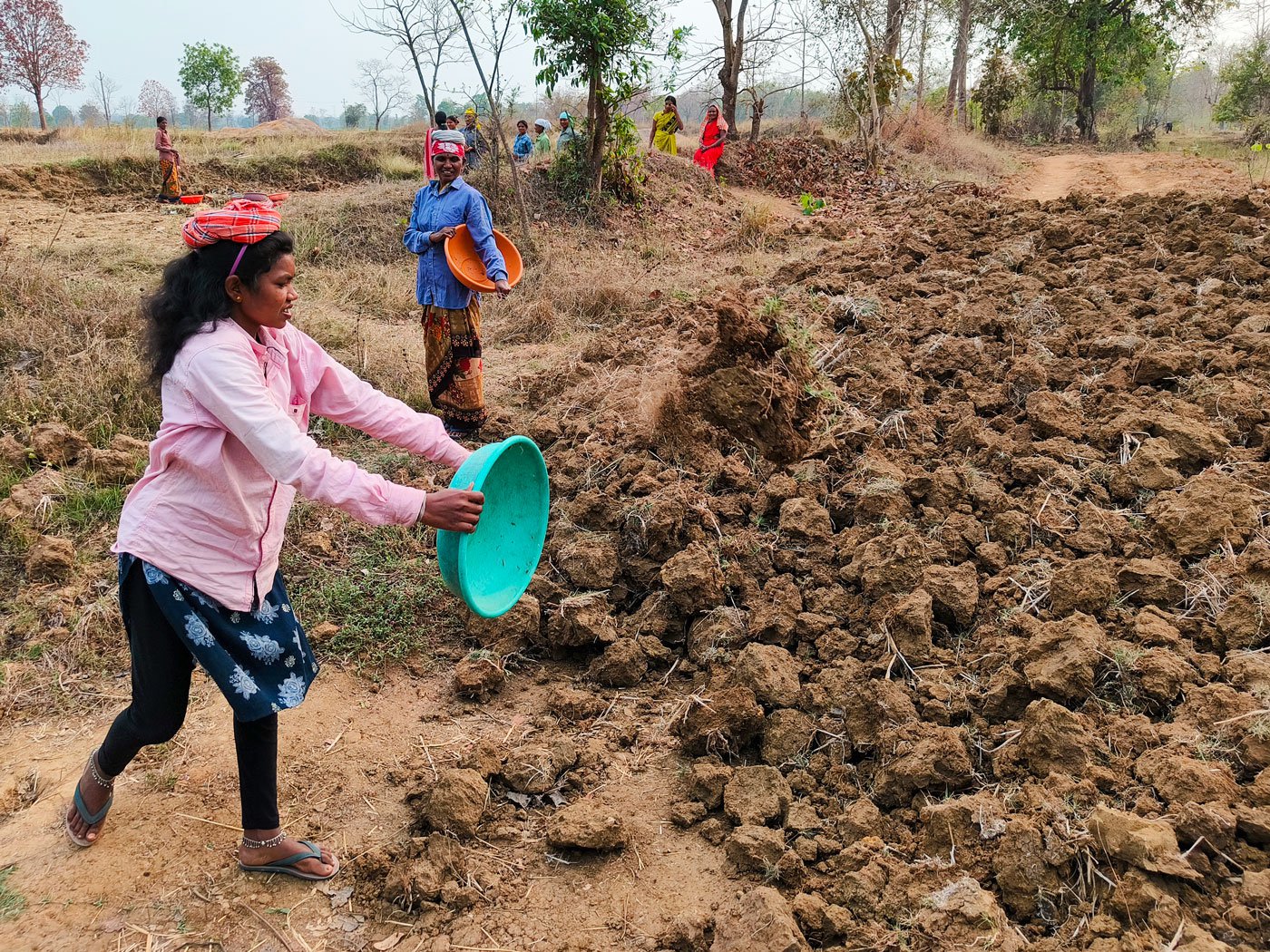
The rice bowl and forest-rich districts of eastern Vidarbha – Bhandara, Gondia, Gadchiroli, Chandrapur and Nagpur– are a total of five parliamentary constituencies. They vote in the first phase of the General Elections on April 19, 2024
There is greater resentment for Sunil Mendhe, the Member of Parliament who’s been fielded again by the Bharatiya Janata Party (BJP) from the Bhandara-Gondia constituency. “He’s never come to our village,” is the common refrain in this large constituency of mainly rural masses.
Mendhe takes on Dr. Prashant Padole from the Congress in a direct contest.
The Araktondi villagers haven’t forgotten their treacherous and painful walk back home during the first covid-19 lockdown in the summer of 2021.
On April 19, when they go to cast their vote, they say, it would possibly be after spending five hours in the morning collecting mahua . They would most certainly lose a day’s wage since the MGNREGA worksite would be shut down, they say.
Who would they vote for?
They don’t reveal the choice explicitly, but do remark, “old times were better”.